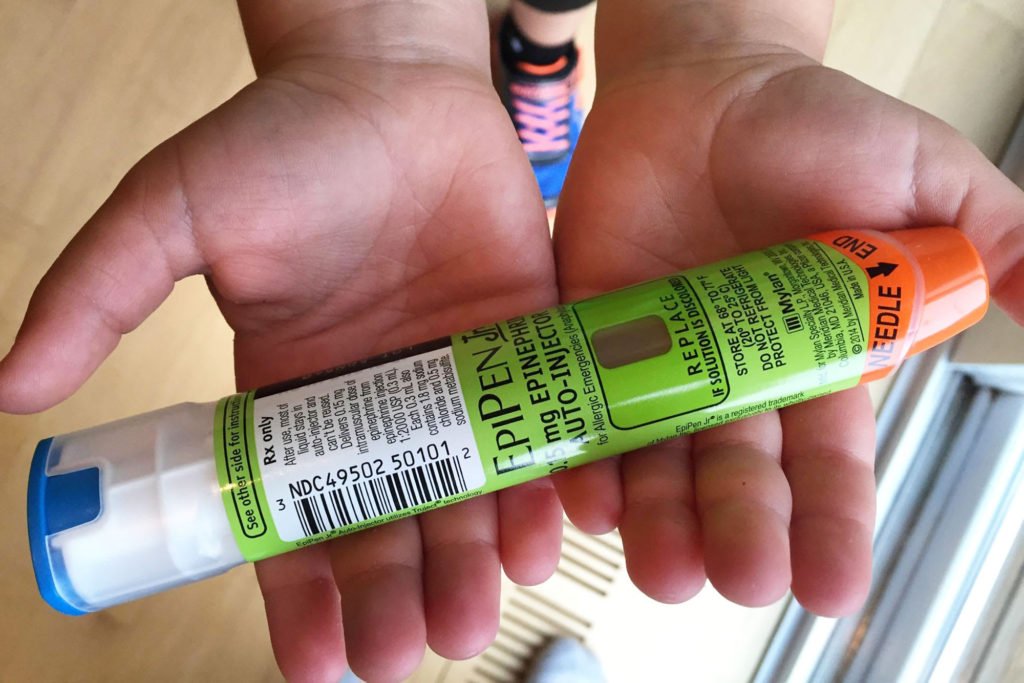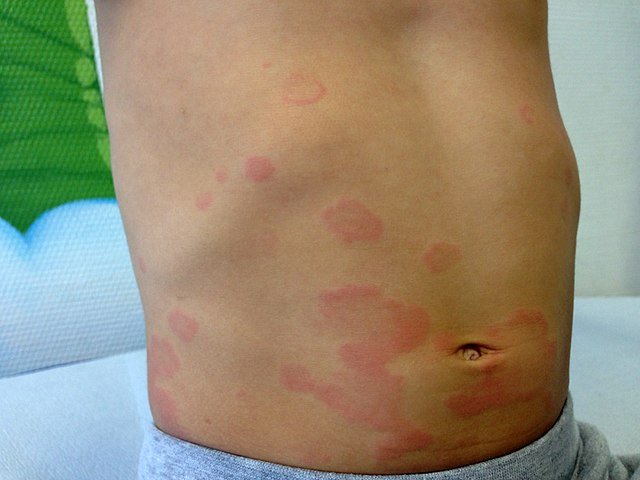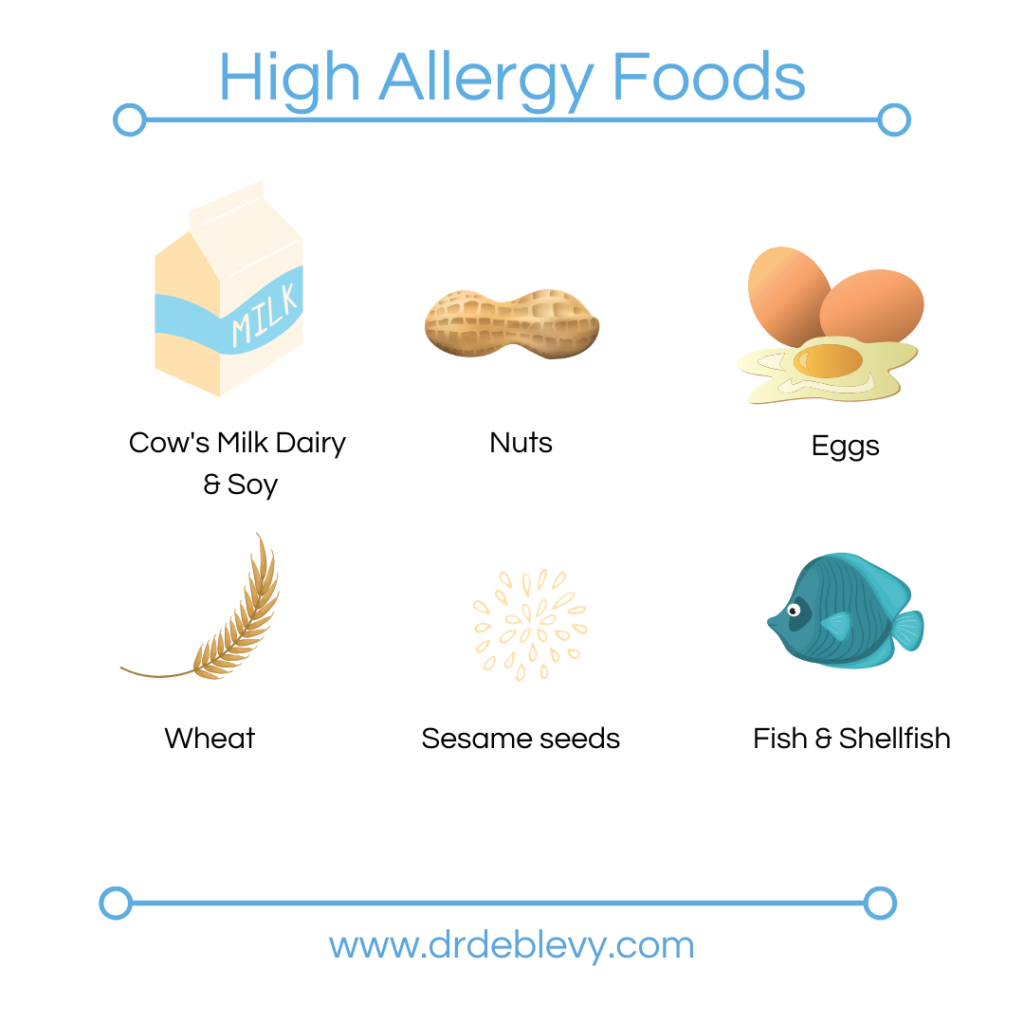
Is it a food allergy?
Let’s just say it, preparing food for your child can be stressful. Is there enough protein, enough fibre? Is it nutrient dense? Is it tasty? Will they even eat it? All important questions but to me the most important is, will they have an allergic reaction to it?
Food allergies are on the rise. Currently in Australia it’s estimated that around 1 in 10 children have a serious food allergy. The majority of which declare themselves in the first two years of life. So feeding young kids can definitely be stressful.
What is a food allergy?
It’s when the body mounts an abnormal immune response to a food. Instead of accepting food as beneficial, it reacts as if it’s dangerous setting off a cascade of immune reactions to fight it off. Unfortunately this immune response ends up causing damage. Usually your child needs to have been exposed to it already to have a reaction (this primes the immune system) which explains why reactions often get worse with each exposure. But children can also have a reaction the first time they eat a food.
An allergy can present as a variety of symptoms from very mild to life threatening. It’s important to differentiate between food allergy and food intolerance. I’ll write more about allergies here and food intolerances (or sensitivities) in another blog.
Symptoms of food allergies:
Anaphylaxis. This is life threatening and a child can deteriorate rapidly. Symptoms include difficulty breathing, tongue swelling, hoarse voice, cough, becoming pale or even collapsing. This is a medical emergency and your child will need urgent care and to be given adrenaline.
If your child has any facial & tongue swelling, hoarse voice, breathing difficulties or decreased level of conciousness you should call an ambulance immediately.
Rashes. The classic rash is an itchy raised red welt (often with a pale center) that is known as urticaria or hives. Although this can be from a food allergy hives can also be from a viral infection. If your child has hives, it can help to keep them cool or give them an antihistamine to help with the itch. Redness and swelling of lips or around the eyes is quite common. If your child has swelling of the tongue, excessive drooling or seems to be having difficulty swallowing please call an ambulance.

Breathing problems. A dry cough or wheeze can occur. This can progress to anaphylaxis so again it is safest to call an ambulance.
Vomiting or abdominal pain. This can also include a condition known as FPIES (food protein induced enterocolitis syndrome). This is a specific reaction when children can become pale, floppy, have profuse vomiting and sometimes diarrhoea. It can be misdiagnosed as gastroenteritis as it usually occurs hours after eating an offending food and there are no other typical signs of allergy like a rash or swelling.
Floppy episodes. Your child may become pale and floppy after eating. Ensure they’re not choking and call an ambulance.
Diarrhoea or blood & mucous in poo. This is classic of cow’s milk protein allergy that up to 1 in 50 infants have. I will write a separate blog about this.
If your child has any of these symptoms or you’re unsure if they have a food allergy it’s safest to avoid that food until you see your doctor.
Which children develop food allergies?
Children with eczema are at a higher risk of food allergies. As are children who have a family member with eczema, food allergies, hay fever or asthma. Other things that have been associated with an increased risk are: low vitamin D levels, use of anti-reflux medications and antibiotics in early life. Guess what’s been implicated? Hello gut microbiome!
There have also been studies showing that children who grow up with animals and siblings actually have a lower risk. This lead to the hygiene hypothesis which suggests that early exposure to certain microorganisms supports development of a healthy immune system and decreases allergies, eczema and asthma.
But despite all the research it’s impossible to confidently predict allergies. All we can say is that some children are born with a genetic predisposition but that something in their environment then triggers it.
Most common foods that children are allergic to

There are certain foods that are usually implicated. They are called allergenic foods and if your little one is about to start solids, it’s recommended that all these foods actually be introduced before 12 months of age to decrease the likelihood of developing an allergy. I usually recommended to start them soon after the low allergy foods.
Yep, the earlier the better it seems but never before 4 months of age according to ASCIA (the Australasian Society of Clinical Immunology and Allergy)
Take home tips
Food allergies are very common and can have a variety of symptoms
It’s important to be vigilant when trying new foods especially if your child has eczema or there is a family history of atopic conditions
When trying new foods it’s safest to offer at breakfast or lunch time so you can watch for any reactions. No you don’t need to drive to a hospital parking lot to do this.
There are foods that are more likely to cause allergy
There is some evidence that certain things can help prevent food allergies although more research is needed
If your child has a food allergy they will need to avoid the food and be seen by a specialist
If you’ve found this interesting or useful please share it and sign up for my newsletter 🙂
